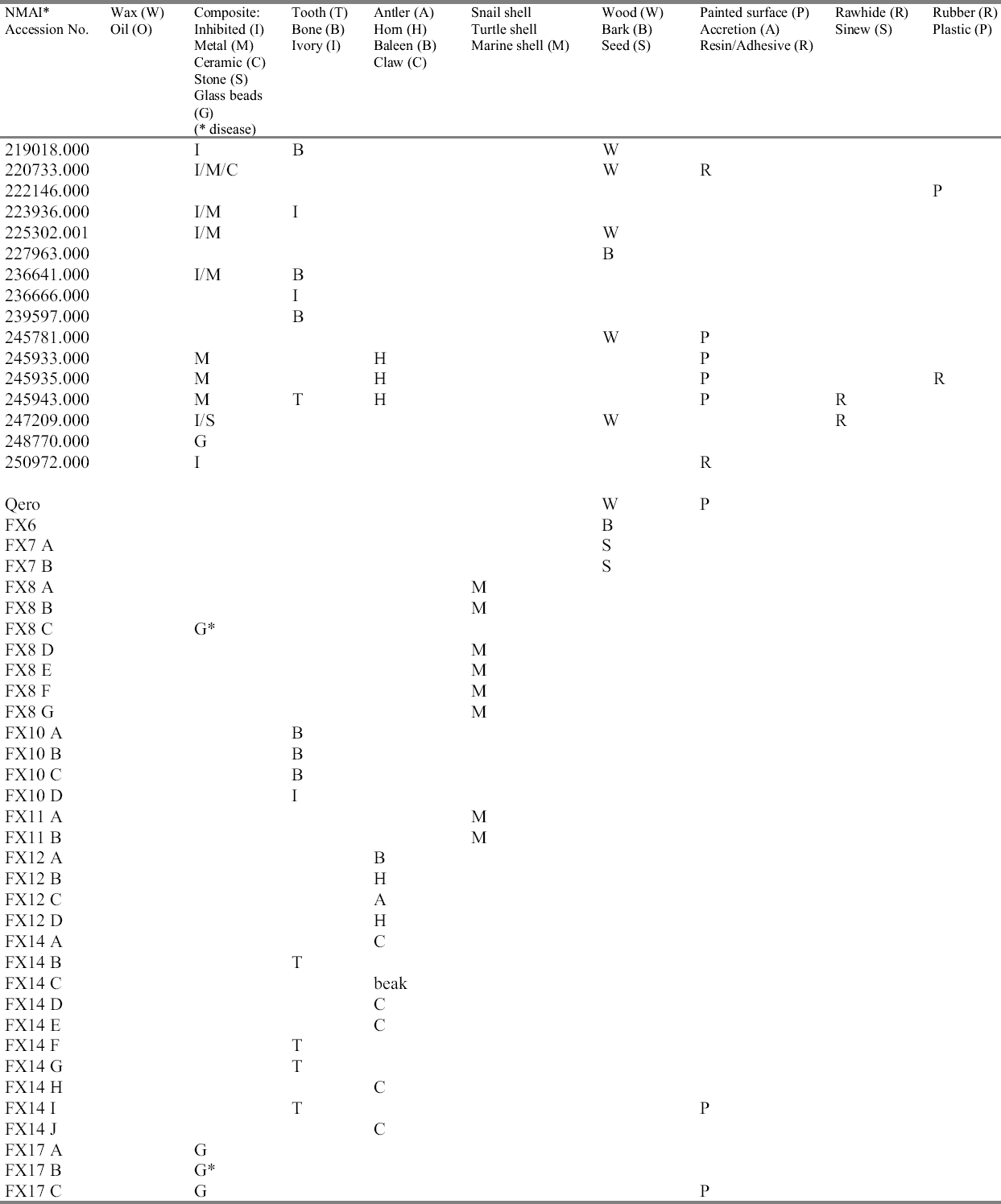DOES LOW-TEMPERATURE PEST MANAGEMENT CAUSE DAMAGE? LITERATURE REVIEW AND OBSERVATIONAL STUDY OF ETHNOGRAPHIC ARTIFACTS
ELLEN CARRLEE
5 THE OBSERVATIONAL STUDY
Objects for this study were selected at the Research Branch from among those slated for freezing and that fell into the previously described categories of concern. Additional samples were taken from the
Table .
Materials Observed
 |
Table .
 |
Table .
Cultural Resources Center (CRC) Conservation Laboratory “Fix-It Shop” Collection (artifact materials not part of accessioned museum objects)
 |
collection of NMAI “fix-it shop” materials used in the past for restoration purposes but now kept in the conservation laboratory for mock-ups and experiments. Table 2 lists the categories of materials observed for each object, and table 3 provides a description of “fix-it shop” materials observed. None of the study objects had been previously frozen at the Research Branch. Records for earlier low-temperature infestation treatments were not available. Upon arrival at the Cultural Resources Center, each object was inspected and documented with 35 mm color print details. For this project, a Nikon 6006 automatic 35 mm camera, a Nikon AF Micro Nikkor 60 mm lens, and a cameramounted Nikon Macro Speed Light SB-29 ring flash were used to ensure consistently controllable lighting. Kodak Royal Gold 200 color print film was chosen for its high quality and fine grain permitting good sharpness and contrast. Measurement of cracks, particularly on anisotropic materials, proved highly subjective with the available equipment. Even with a fine pair of calipers, fading of cracks into the grain of the mate-rial made it difficult to have confidence in the measurements. Visual comparison became the basis of observation. Detail photographs were taken as close as the lens would allow, and this distance proved to be at the threshold of easy visibility with the naked eye. Objects were packed according to normal move protocols described above, and put into the freezer for 6 days. After removal from the freezer, boxes were allowed to acclimate for at least 24 hours. Objects were then unpacked and compared to the prefreezing color prints. In cases where the outcome was ambiguous, a postfreezing photograph was taken under identical lighting conditions to compare with the initial print. In cases where the outcome was particularly illustrative, a postfreezing photograph also was taken. Table 4 documents the results of the three object groups put into the freezer during this study.
|